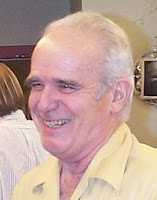Paleo-CO2
Watch this video! It is an amazing display of atmospheric carbon dioxide trends. My favourite portion kicks in after 1:40mins - so, make sure to watch it till the end:
Carbon dioxide content in the atmosphere is a crucial parameter that plays a major role in mediating the surface temperature of the Earth through radiative forcing. Its inherent molecular makeup traps the outgoing longwave radiation (OLR) that the Earth emits. This balance of incoming solar radiation (the radiative budget, in heat transfer terminology) is vital for the climate system of the Earth which encompasses the atmosphere, biosphere, cryosphere, hydrosphere etc.
In 1958, Charles Keeling, from the Scripps Institute of Oceanography, started collecting and monitoring carbon dioxide in the atmosphere at the Mauna Loa Observatory in Hawaii. Shown in the figure above, this dataset represents the longest continuous record of atmospheric CO2 measurements - a mere 54 years. How do we know what CO2 was doing in the past when the Earth system was very different than it is now (eg. the ice ages, prolonged warm periods)? For this, we turn towards proxies.
Here is a list of some proxies (to the best of my knowledge) that are useful in reconstructing atmospheric carbon dioxide content, with links to a few articles that deal with them (most are pdfs, though some links are paywalled - I will be happy to send particular papers if requested):
- Bulk inorganic/organic carbon content in marine sediments [ref 1, 2]
- Air bubbles trapped in ice cores [refs 1, 2]
- Paleosols - ancient soils buried under sedimentary deposits [refs 1, 2]
- Boron isotopes in planktic foraminifera, a proxy for paleo-pH levels in the ocean [refs 1, 2, 3]
- Alkenone & lipid biomarkers derived from haptophyte algae [refs 1, 2]
- Fossil plants and leaves [refs 1, 2]
This is an incomplete list, but covers most of the widely used proxies for paleo-CO2 reconstructions (please post more examples in the comments if you know 'em). Each record obtained from a different proxy varies in terms of resolution of the estimates (decadal, centennial, millenial etc.) and length of the record (how far can they go back?). Together though, they paint a cohesive picture - as can be seen in the second half of the video above.













